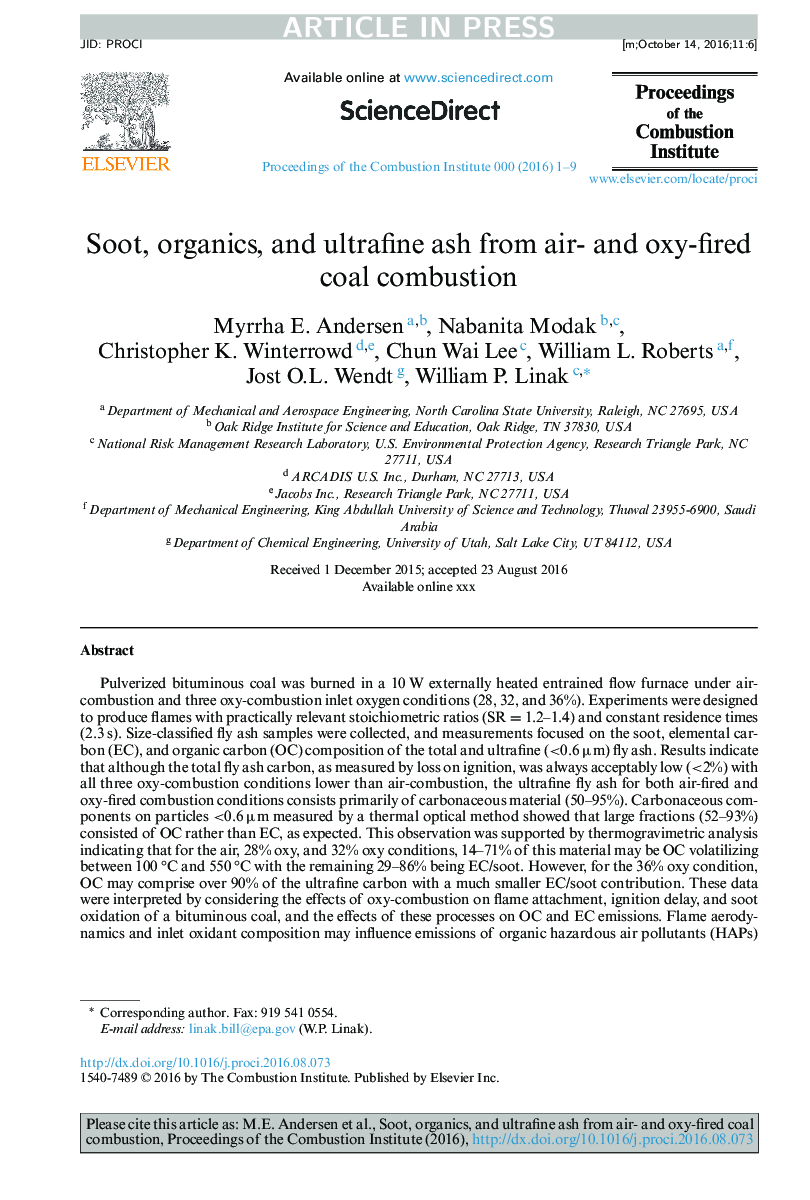| Article ID | Journal | Published Year | Pages | File Type |
|---|---|---|---|---|
| 4915463 | Proceedings of the Combustion Institute | 2017 | 9 Pages |
Abstract
Pulverized bituminous coal was burned in a 10 W externally heated entrained flow furnace under air-combustion and three oxy-combustion inlet oxygen conditions (28, 32, and 36%). Experiments were designed to produce flames with practically relevant stoichiometric ratios (SR = 1.2-1.4) and constant residence times (2.3 s). Size-classified fly ash samples were collected, and measurements focused on the soot, elemental carbon (EC), and organic carbon (OC) composition of the total and ultrafine (<0.6 µm) fly ash. Results indicate that although the total fly ash carbon, as measured by loss on ignition, was always acceptably low (<2%) with all three oxy-combustion conditions lower than air-combustion, the ultrafine fly ash for both air-fired and oxy-fired combustion conditions consists primarily of carbonaceous material (50-95%). Carbonaceous components on particles <0.6 µm measured by a thermal optical method showed that large fractions (52-93%) consisted of OC rather than EC, as expected. This observation was supported by thermogravimetric analysis indicating that for the air, 28% oxy, and 32% oxy conditions, 14-71% of this material may be OC volatilizing between 100 °C and 550 °C with the remaining 29-86% being EC/soot. However, for the 36% oxy condition, OC may comprise over 90% of the ultrafine carbon with a much smaller EC/soot contribution. These data were interpreted by considering the effects of oxy-combustion on flame attachment, ignition delay, and soot oxidation of a bituminous coal, and the effects of these processes on OC and EC emissions. Flame aerodynamics and inlet oxidant composition may influence emissions of organic hazardous air pollutants (HAPs) from a bituminous coal. During oxy-coal combustion, judicious control of inlet oxygen concentration and placement may be used to minimize organic HAP and soot emissions.
Related Topics
Physical Sciences and Engineering
Chemical Engineering
Chemical Engineering (General)
Authors
Myrrha E. Andersen, Nabanita Modak, Christopher K. Winterrowd, Chun Wai Lee, William L. Roberts, Jost O.L. Wendt, William P. Linak,
